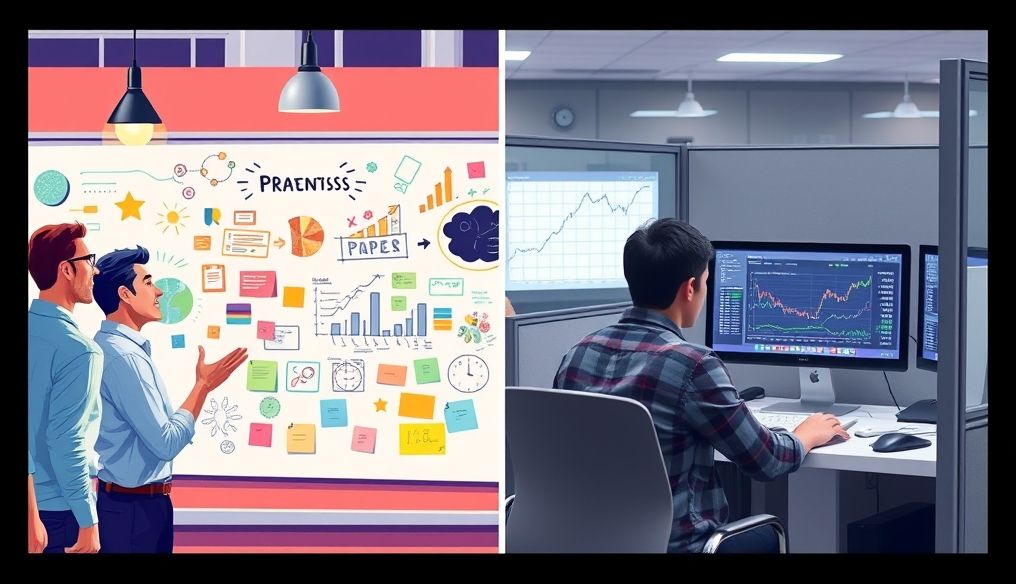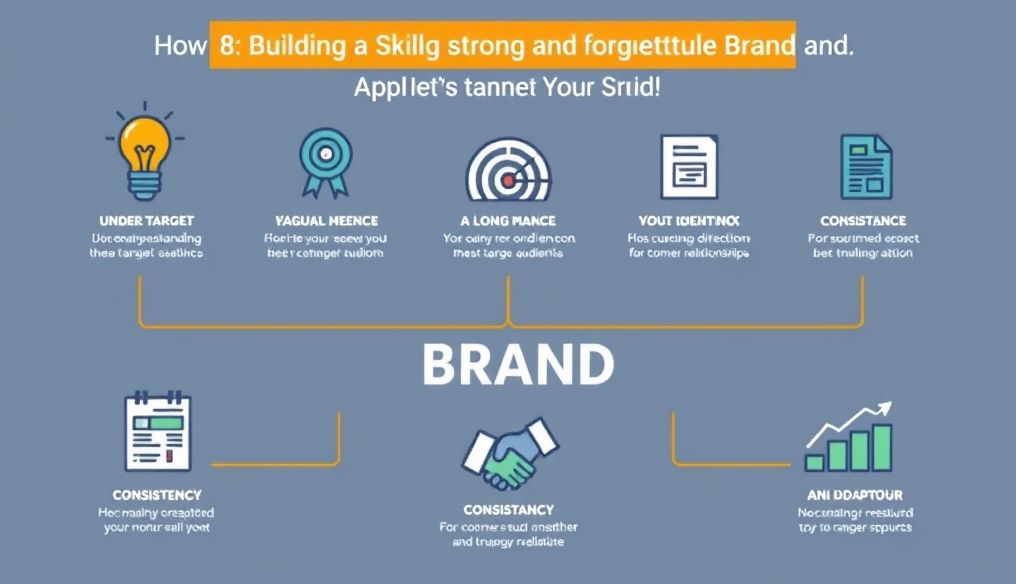Introduction: Between Risk and Security
In the business world, the entrepreneur is often portrayed as an adventurous hero, while the employee is seen as someone who seeks stability and security. But does this stereotype reflect reality? This article aims to explore the fundamental differences between an entrepreneur's mindset and an employee's mindset, focusing on various aspects such as risk, innovation, responsibility, and goals.
Chapter 1: Risk and Tolerance
1.1 The Entrepreneur: Calculated Risk
An entrepreneur is inherently a risk-taker. They are willing to put their savings, time, and effort into a project that may succeed or fail. However, the risk-taking of an entrepreneur is not random; it is a calculated risk. They analyze the market, assess the competition, and estimate the chances of success before making any decision. The entrepreneur sees risk as an opportunity for growth and development and is not afraid of failure, but rather considers it part of the learning process.
Example: An entrepreneur decides to launch a new smartphone app. Before doing so, they study the market, analyze competing apps, and ensure there is demand for the app they are offering. Then they develop a detailed business plan, determine the necessary budget, and market the app effectively.
1.2 The Employee: Avoiding Risk and Seeking Security
Unlike the entrepreneur, the employee tends to avoid risk and seek job security and stability. They prefer to work in an organized environment, where tasks are clear and responsibilities are defined. The employee sees the job as a source of stable income and social benefits and does not want to risk losing it.
Example: An employee works in a large company. They adhere to their manager's instructions, perform the assigned tasks accurately, and do not seek to change the status quo. They prefer to stay in their current job despite not being completely satisfied with it, for fear of losing job security.
Chapter 2: Innovation and Creativity
2.1 The Entrepreneur: The Power of Innovation and Renewal
Innovation is the essence of entrepreneurship. The entrepreneur is always looking for new and innovative solutions to existing problems or to offer products and services that better meet customer needs. They are not content with the status quo but are always seeking change and development.
Example: An entrepreneur invents a new way to deliver food using drones. This method reduces delivery time, increases service efficiency, and provides a unique experience for customers.
2.2 The Employee: Implementing Existing Ideas
The employee's role is usually to implement existing ideas, not to innovate new ones. They work within a defined framework and follow approved instructions and procedures. The employee may have creative ideas, but they often hesitate to propose them, for fear of not being accepted or of bearing the responsibility for their implementation.
Example: An employee works in the marketing department of a large company. They implement the marketing campaigns developed by their manager and do not participate in the planning or innovation process.
Chapter 3: Responsibility and Leadership
3.1 The Entrepreneur: Taking Full Responsibility
The entrepreneur takes full responsibility for the success or failure of their project. They are responsible for making decisions, managing resources, and achieving goals. They cannot blame others in case of failure, but must take responsibility and learn from their mistakes.
Example: An entrepreneur faces financial difficulties in their project. Instead of giving up, they analyze the situation, identify the root causes of the problem, and develop a new action plan to overcome the crisis.
3.2 The Employee: Limited Responsibility
The employee's responsibility is limited to the tasks assigned to them. They are responsible for performing these tasks accurately and efficiently, but they are not responsible for the final results of the project. In case of a problem, the employee can blame their manager or external circumstances.
Example: An employee works in the sales department of a large company. They achieve the sales targets set for them, but they are not responsible for the company's overall sales strategy.
Chapter 4: Goals and Ambitions
4.1 The Entrepreneur: Achieving a Personal Vision
The entrepreneur usually has a personal vision that they seek to achieve through their project. They aim not only to make a profit but also to make a positive change in society or to provide unique value to customers.
Example: An entrepreneur launches a social project aimed at providing job opportunities for young people in remote areas.
4.2 The Employee: Career Advancement
The employee's goal is usually to advance their career within the company they work for. They seek promotions and salary increases and to reach higher management positions.
Example: An employee works hard and diligently in their job and seeks a promotion to the position of department manager.
Chapter 5: Flexibility and Adaptation
5.1 The Entrepreneur: The Ability to Adapt Quickly
The business world is constantly changing, and the successful entrepreneur is one who has the ability to adapt quickly to these changes. They must be able to change their plans, adjust their strategy, and seize new opportunities.
Example: An entrepreneur faces intense competition in the market. Instead of giving up, they analyze the competition, identify their strengths and weaknesses, and develop a new strategy to overcome the competitors.
5.2 The Employee: Resistance to Change
The employee often tends to resist change and prefers to stay in their comfort zone. They may find it difficult to adapt to changes in the work environment or to learn new skills.
Example: An employee has difficulty learning how to use a new program at work and prefers to continue using traditional methods.
Chapter 6: Motivation and Inspiration
6.1 The Entrepreneur: Self-Motivation and Passion
The entrepreneur has strong self-motivation and great passion for their project. They believe in their vision and work hard and diligently to achieve it. They do not need external control or motivation but draw their strength from within.
Example: An entrepreneur works long hours on their project, despite the challenges and difficulties they face, because they believe in their vision and aim to achieve it.
6.2 The Employee: External Motivation
The employee usually needs external motivation to work hard and diligently. This motivation may be in the form of financial rewards, promotions, or appreciation from their manager.
Example: An employee works hard and diligently in their job because they expect to receive a financial bonus at the end of the year.
Chapter 7: Time Management
7.1 The Entrepreneur: Allocating Time Effectively
The successful entrepreneur is one who can manage their time effectively. They must be able to prioritize, allocate time to important tasks, and avoid wasting time on unproductive activities.
Example: An entrepreneur uses time management techniques such as the Pomodoro Technique or the Eisenhower Matrix to increase their productivity.
7.2 The Employee: Adhering to Working Hours
The employee usually adheres to the working hours set for them and does not care much about managing their time effectively. They may spend some time on unproductive activities, such as browsing the internet or chatting with colleagues.
Example: An employee spends part of their working time browsing social media sites.
Chapter 8: Social Relationships
8.1 The Entrepreneur: Building a Strong Network
The successful entrepreneur is one who can build a strong network of relationships with customers, suppliers, investors, and other entrepreneurs. These relationships help them develop their project and get support and advice.
Example: An entrepreneur participates in conferences and events related to their field of work and communicates with others to build new relationships.
8.2 The Employee: Professional Relationships
The employee's relationships are usually limited to their colleagues at work and their manager. They may not have a wide network of relationships outside the work environment.
Example: An employee spends most of their time at work with their colleagues in the department and does not communicate much with others outside the department.
Conclusion: No Better Choice, But a More Suitable Choice
There is no better choice between being an entrepreneur or an employee. Each option has its advantages and disadvantages, and the choice depends on the individual's personality, goals, and abilities. Some people prefer to take risks, innovate, and take full responsibility, while others prefer security, stability, and working within a defined framework. The important thing is to choose the option that suits you, which allows you to achieve your goals and ambitions.
Disclaimer: This article provides general information about the difference between an entrepreneur and an employee and does not provide investment or professional advice. You should consult a specialist before making any decision regarding your business or career.




